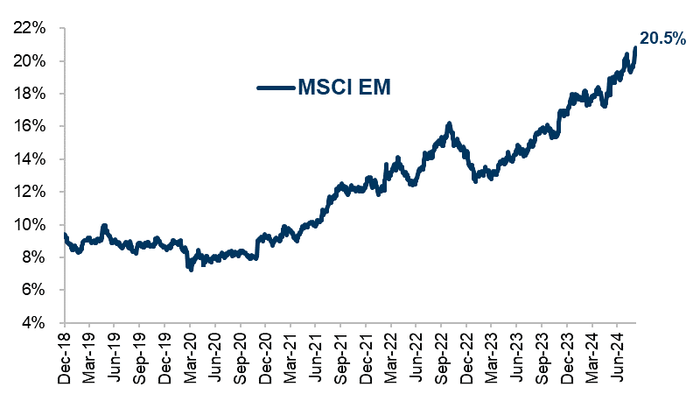In recent weeks, a remarkable shift has occurred in the Asian stock market landscape, with Chinese stocks experiencing their most significant surge since 2008, while India’s Nifty index suffered a sharp decline of 4.5%, marking its worst weekly performance since June 2022. This divergence in market performance has prompted investors to scrutinize potential trends, with many questioning whether a rotation of investment is occurring from India to China. According to Nikhilesh Kasi, a trader at Goldman Sachs, there is a clear trend suggesting that capital is migrating towards Chinese markets, indicated by the current flow of investments and sentiment.
Kasi’s analysis reflects a broader pattern among investors who are increasingly favoring Chinese stocks due to a variety of factors. One influential element is the economic recovery in China, bolstered by government support measures and easing of restrictions that have stimulated market confidence. This resurgence has attracted foreign investors seeking growth opportunities, especially in technology and consumer sectors that have shown resilience and profitability. Consequently, the vibrant shift in investor sentiment towards China has been palpable, overshadowing India’s recent performance.
In contrast, India’s market has been impacted by several headwinds, including rising inflationary pressures, a tightening monetary policy, and concerns over economic growth. As the Reserve Bank of India continues to navigate a challenging economic landscape, investor confidence has waned, leading to significant sell-offs in the stock market. The decline in India’s Nifty index reflects these anxieties, causing traders and investors to reevaluate their positions and consider reallocating capital to more favorable markets, primarily China at this juncture.
Another critical aspect of this rotation is the ongoing geopolitical dynamics influencing investor decisions. The global economic environment has seen increasing uncertainty, with countries navigating tensions surrounding trade and diplomacy. In this regard, China’s more stable policy framework has garnered appeal compared to the shifting landscape in India. Investors have been more willing to embrace the perceived safety and potential for returns in the Chinese markets amidst these global headwinds, further worsening the outflow of capital from India.
Despite the attractive aspects of the Chinese market, the situation in India is not entirely bleak. Long-term investors recognize that India’s fundamentals remain strong, bolstered by a young demographic, a burgeoning middle class, and structural reforms aimed at economic growth. While the temporary dip in the Nifty index raises valid concerns, many analysts are optimistic about India’s resilience and potential for recovery. They believe that once current economic pressures abate, investor confidence could be restored, allowing for a rebound in the market.
In summary, the shifting dynamics in the Asian stock markets underscore a significant rotation of capital from India to China, driven by economic recovery in China and ongoing challenges in the Indian market. Investors are weighing these factors carefully in light of geopolitical tensions and domestic economic issues, leading to a pronounced divergence between the two markets. While current trends suggest a preference for Chinese stocks, India’s long-term growth potential remains, indicating that investors may eventually reassess and rebalance their portfolios as conditions evolve.

